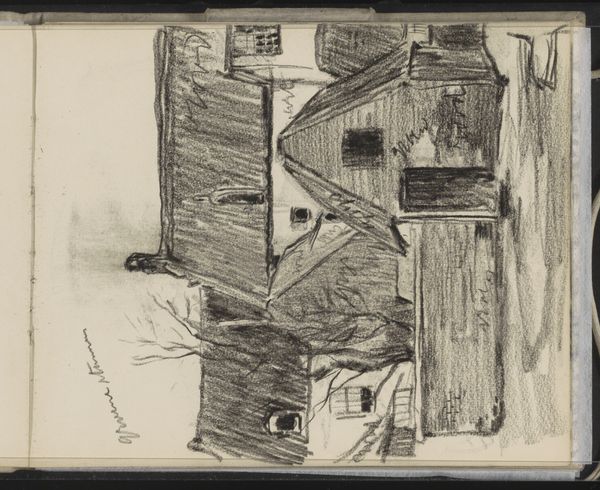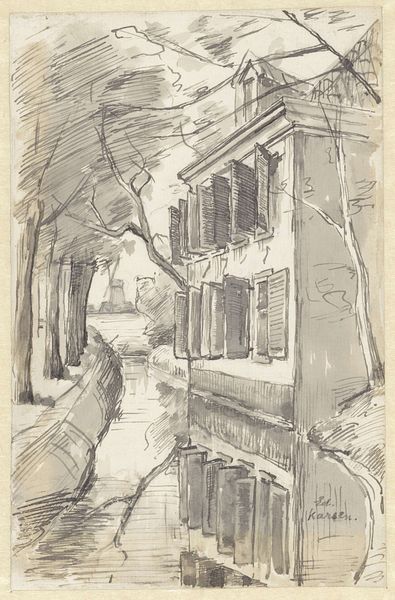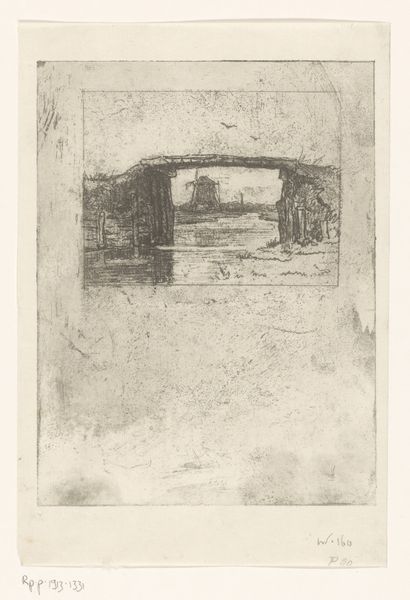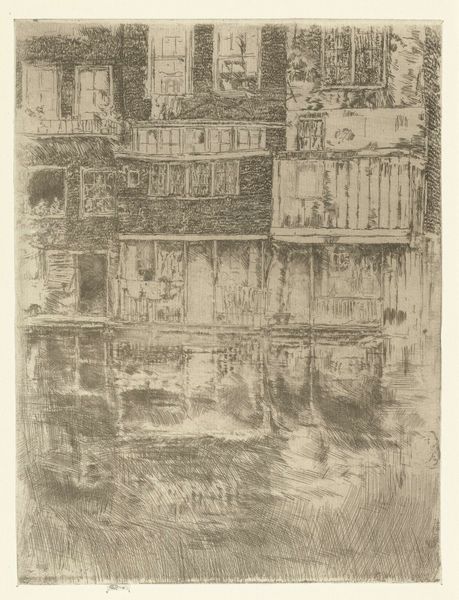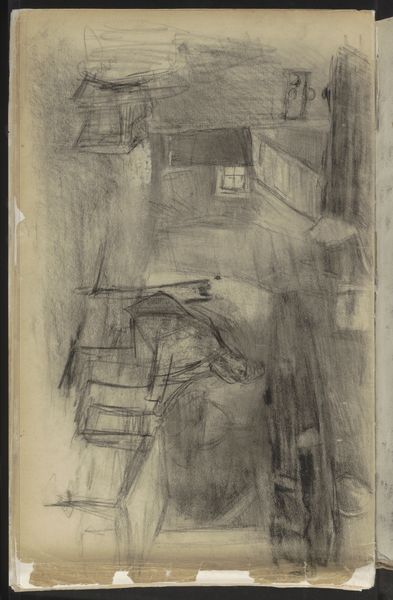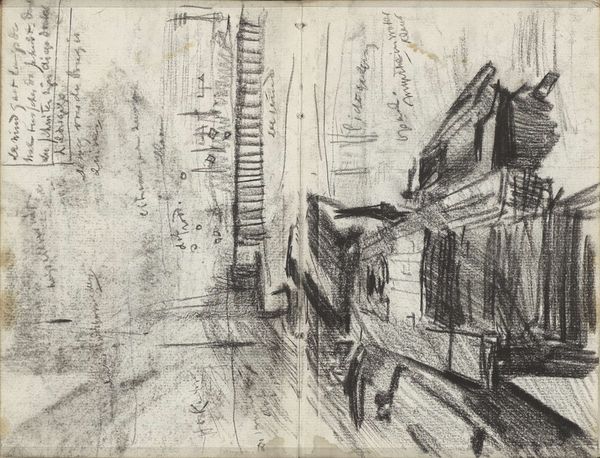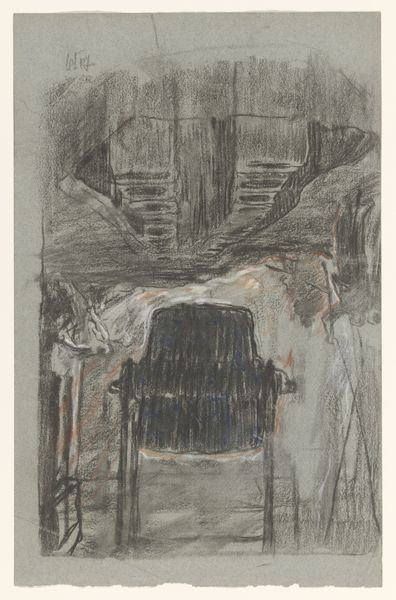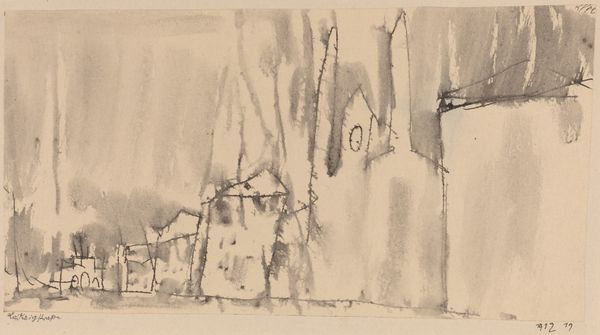
Dimensions: image: 22.54 × 19.69 cm (8 7/8 × 7 3/4 in.) sheet: 29.21 × 25.4 cm (11 1/2 × 10 in.)
Copyright: National Gallery of Art: CC0 1.0
Curator: What a melancholic beauty! Eugène Vail's watercolor, "Reflections, Venetian Canal," created circa 1900 to 1920, casts such a reflective, somber mood. Editor: It’s certainly striking. Considering this drawing comes from the turn of the century, I see it speaking to Venice’s decaying grandeur amid rising global industrialization. We should note the context—a time of profound social and economic transformation impacting traditional trade hubs like Venice. Curator: Absolutely. The visible strokes and layered washes convey a sense of transience. Watercolor lends itself beautifully to the theme—think of how pigments behave; they mix and muddle as they are diluted by the material of water. Here, we see an analogy with Venice, an urban fabric built upon shifting aquatic matter. Editor: It goes further. Look at how Vail captures light in the water’s reflection. Light bounces on the surface but barely illuminates what lies underneath, perhaps alluding to deeper socio-economic disparities. Who profited, and who suffered during Venice’s period as a center for Mediterranean trade? Curator: True. Also, think about the production process. Watercolor’s affordability, along with readily available paper, made landscape art like this appealing to emerging middle class traveling on leisure tours—the “Grand Tour.” We often overlook that consumption in favor of appreciating skill or talent alone. Editor: That's fascinating. Thinking about those leisure travelers situates the image within colonialist expansion as wealthy elites engaged in the aesthetic consumption of subjugated spaces. Were Venice's locals equally benefiting from such economies? Or, who does such representation serve and alienate? Curator: Interesting questions. I suppose in many ways Vail has provided a fleeting perspective – the surface appeal masking far deeper issues. We both came to vastly different understandings through this process. Editor: Exactly. Seeing it now, Vail’s choice of watercolor subtly engages with the history, materiality, and socio-political environment of the period, presenting Venice at an important inflection point. The more we consider this, the more resonant the drawing becomes.
Comments
No comments
Be the first to comment and join the conversation on the ultimate creative platform.
